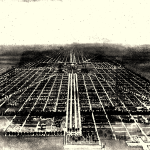Jim Rogers of Texas A&M disputes the analysis of the decline of the value of the dollar that I posted from the Economist a week or two ago. The remainder of this is from Jim:
The Economist is a good magazine with very broad coverage hard to find in U.S. magazines. Its one error is to sound more certain (and often more convincing) than it is.
So measured by gold, the dollar has lost 97 percent of its purchasing power. Really? Do the math: If the dollar has really lost 97 percent of its purchasing power, then a person who earned $10,000 in 1970 would be just as well off as a person who earns $333,333 today. But recalling what my dad earned in 1970, I think not.
Gold is subject to the laws of supply and demand as much as any commodity. It’s not purchased simply as a store of value, therefore it should not be treated, by itself, as a measure of purchasing power of the dollar (besides for how much gold you can purchase).
Let’s choose a different commodity measure of wealth: How about denominating purchasing power in terms of calculators? My father purchased a calculator for $100 in 1970 that could only add, subtract, divide and multiple. Companies now give calculators that perform those functions away for free. But let’s say that they cost $10 today (even though even a $10 calculator will have twenty or more functions than that calculator in 1970). Just comparing nominal categories, a person today is ten times more affluent than the person in 1970. So the person earning $10,000 today is as affluent as someone earning $100,000 in 1970. Indeed, multiples of that given the improvement in terms of quality.
Again, I think not. But anyone can play the Economist ‘s game by choosing whichever commodity it is that you want to prove your point.
The point is not that there is no answer. But rather that you want to compare baskets of commodities rather than a single commodity, And then it’s going to be tough to compare given quality changes.










